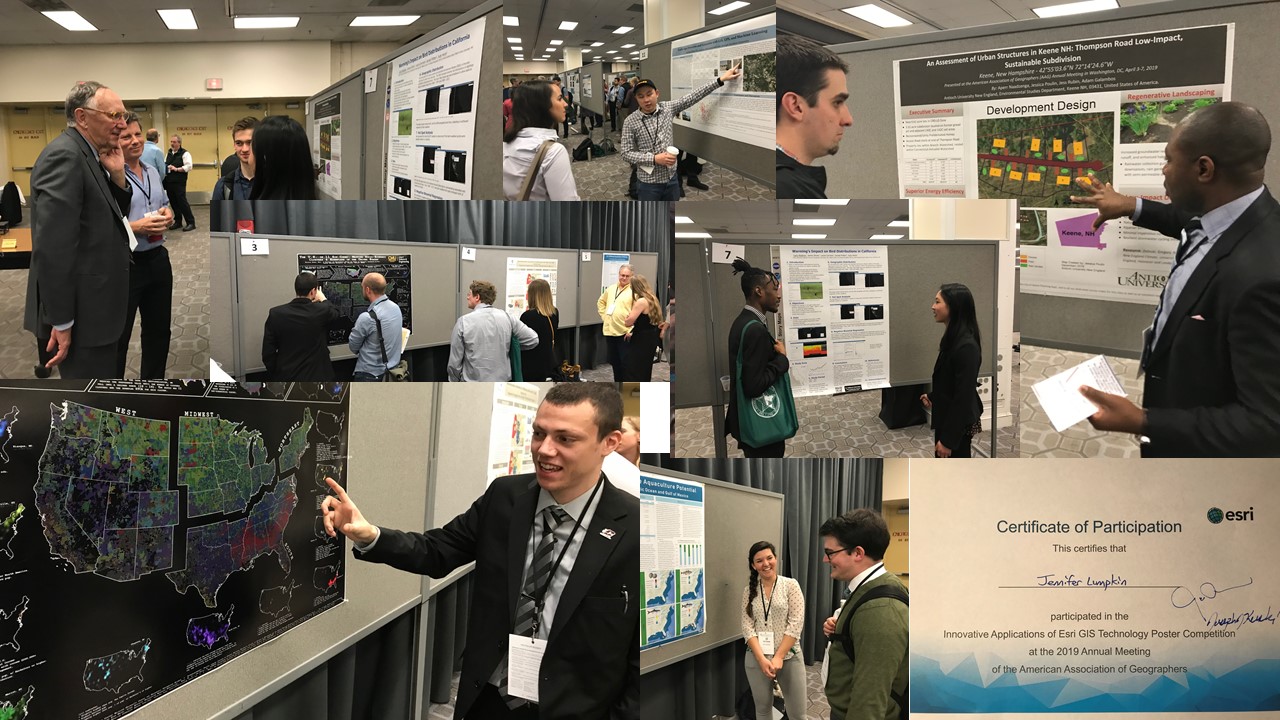- Home
- :
- All Communities
- :
- Industries
- :
- Education
- :
- Education Blog
- :
- 2020 Innovative Applications of Esri GIS Technolog...
2020 Innovative Applications of Esri GIS Technology Poster Competition at AAG Annual Meeting
- Subscribe to RSS Feed
- Mark as New
- Mark as Read
- Bookmark
- Subscribe
- Printer Friendly Page
Are you using Esri GIS technology to better understand a UN Sustainable Development Goal (SDG) and to report progress or inspire action? If so, showcase your work by participating in the Esri GIS Technology poster competition at the 2020 American Association of Geographers (AAG) Annual Meeting in Denver Colorado USA. In this session, you will learn from others as you discuss your poster with people from all over the world. Cash awards in 4 categories will be given, but even more importantly, this is an opportunity for your students and colleagues to showcase the innovative things they are doing with Esri GIS technology to help understand and solve the most pressing local-to-global problems of our time. For more information about posters at AAG, see this page. The deadline has been extended for this competition to: 10 March 2020!
Your submission can be a printed poster to be displayed on a bulletin board OR a StoryMap or other digital format that can be displayed on a monitor. If the latter, it has to be shared with the public and accessible without a password. This session is open to anyone registered for the 2020 AAG Annual Meeting. Student participation is especially encouraged. Your submission must demonstrate the use of at least one component of the Esri ArcGIS platform, which could include ArcGIS Online, ArcGIS StoryMaps, ArcGIS Pro, Insights for ArcGIS, ArcGIS Community Analyst, Survey123, Collector for ArcGIS, or other Esri technology.
Submissions will be judged and awarded in the following 4 categories:
- Best Application of GIS to Solve or understand a UN Sustainable Development Goal (SDG): How effectively does the poster show why GIS is an appropriate toolset to apply to a SDG? How effectively does the presentation show how GIS was applied to this specific issue?
- Best Use of Spatial Analysis Methods: How are techniques such as spatial statistics, overlay and proximity, multivariate mapping, space-time cubes, or others being used to analyze the patterns, relationships, and trends in the data, rather than simply displaying data on a map?
- Best Use of Cartography to Tell a Compelling Story: How are classification methods, colors, 2D and 3D symbols, basemaps, multimedia, and other cartographic elements and techniques being used to clearly explain the problem or issue being examined?
- Best Use of Components of Esri Technology (ArcGIS Online, ArcGIS Pro, Insights, etc.): How and to what extent are Esri GIS tools and functions being rigorously applied to display, analyze, and communicate the results of the research or the extent of the problem being examined?
Do the following to register:
(1) Register for the meeting and submit your abstract to AAG, here. Yes, we are past the deadline, but the AAG has generously allowed us to extend the deadline for this competition. Register and then contact the AAG via meeting@aag.org and explain that you are applying for the AAG Esri GIS Poster Competition.
(2) Use this form once you receive your confirmation from AAG - remember to do so by 10 March 2020. All best wishes.

Collage of poster competition from the 2019 AAG Annual Meeting.
You must be a registered user to add a comment. If you've already registered, sign in. Otherwise, register and sign in.
-
Administration
78 -
Announcements
80 -
Career & Tech Ed
1 -
Curriculum-Learning Resources
257 -
Education Facilities
24 -
Events
72 -
GeoInquiries
1 -
Higher Education
595 -
Informal Education
281 -
Licensing Best Practices
91 -
National Geographic MapMaker
33 -
Pedagogy and Education Theory
224 -
Schools (K - 12)
282 -
Schools (K-12)
272 -
Spatial data
35 -
STEM
3 -
Students - Higher Education
245 -
Students - K-12 Schools
128 -
Success Stories
36 -
TeacherDesk
1 -
Tech Tips
117
- « Previous
- Next »